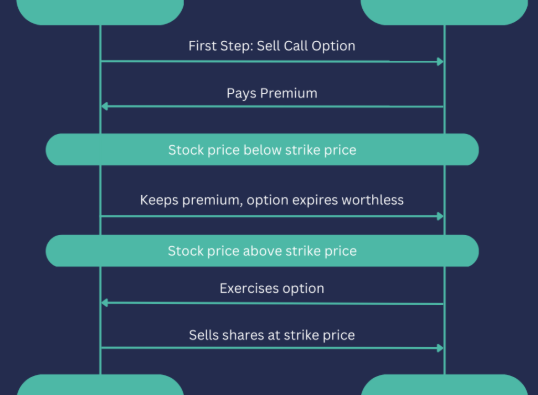
Intraday trading, also known as day trading, involves buying and selling financial instruments within the same trading day. Unlike long-term investing, this approach focuses on capturing gains from short-term price movements. Successful intraday trading demands quick thinking, technical proficiency, and a keen eye for market trends.
If you’re planning to step into the world of day trading in 2025, understanding key strategies can make a significant difference in your performance. Here are ten well-regarded intraday trading strategies that can help you navigate the markets with more precision and confidence.
What is Intraday Trading?
Intraday trading is the practice of executing trades—buying and selling—within the same day. This form of trading typically applies to stocks, commodities, or currencies. Unlike traditional investing that benefits from long-term price appreciation, intraday traders profit from small fluctuations in price, often using charts, indicators, and market patterns to guide their decisions.
1. Moving Average Crossover
This technique involves using two moving averages—one short-term and one long-term. When the shorter-term average crosses above the longer-term one, it’s considered a buy signal. Conversely, when it crosses below, it suggests a sell opportunity. This method helps identify shifts in market direction.
2. Momentum Trading
Momentum traders seek assets that are moving strongly in one direction with high volume. They look to capitalize on the strength of the movement, often entering trades early in the trend and exiting before momentum fades.
3. Gap and Go Strategy
Stocks that open with significant price gaps compared to the previous day’s close can offer trading opportunities. The “gap and go” approach involves entering trades shortly after the market opens, aiming to ride the continuation of this early momentum.
4. Bull Flag Formation
A bull flag appears after a sharp upward move, followed by a period of consolidation that resembles a flag. Traders anticipate a breakout above the flag pattern, signaling a continuation of the upward trend.
5. Trend Reversal Strategy
This method focuses on identifying signs that a current trend is losing strength and may reverse. Reversal traders watch for technical cues, such as divergences between price and indicators, to time their entries in the opposite direction.
6. Pivot Point Approach
Pivot points act as potential turning points in the market. These levels are calculated from the previous day’s high, low, and close. Traders use them to find support and resistance zones, helping guide entry and exit points.
7. Scalping Method
Scalping involves making dozens or even hundreds of trades per day to “scalp” small profits from each. Scalpers require fast execution and focus on extremely short-term price moves, often exiting trades within minutes or seconds.
8. Pullback Entry
Pullback traders wait for a minor dip in price within an ongoing trend, then enter in the direction of the trend. This approach allows traders to buy at a temporary discount during an uptrend or sell at a premium during a downtrend.
9. Breakout Strategy
When a stock or asset breaks out of a defined range or chart pattern, it can signal a strong move. Breakout traders seek to enter at the moment of the breakout, anticipating that increased interest will propel the price further in that direction.
10. CFD Trading Tactics
Contract for Difference (CFD) trading lets traders speculate on price changes without owning the underlying asset. CFDs are flexible and can be used across asset classes like stocks, indices, and commodities. The key is to track short-term price actions and act quickly.
Practical Tips for Intraday Success
Mastering strategies alone isn’t enough—execution and mindset matter just as much. Here are some tips to refine your trading approach:
- Define Clear Objectives: Know your profit targets and acceptable risk levels before initiating trades.
- Use Stop-Loss Orders: Always set a stop loss to manage risk and avoid major losses.
- Manage Capital Wisely: Never risk more than a small portion of your trading capital on any single trade.
- Stay Updated: Monitor news and market events that could affect price movements.
- Be Disciplined: Stick to your strategy and avoid making emotional decisions.
- Trade Liquid Assets: Choose instruments with high trading volumes for smoother execution.
- Avoid Overtrading: Fewer, high-quality trades usually outperform frequent trades lacking solid rationale.
- Keep Learning: Markets evolve, and ongoing education helps you adapt and refine your strategy.
Hallmarks of Intraday Trading
- Short-Term Focus: Trades are closed by the end of the day, avoiding overnight risk.
- Leverage Use: Borrowed capital can magnify gains—and losses.
- Heavy Use of Charts: Technical indicators are central to decision-making.
- Volatility-Driven: Greater price swings offer more chances for profit.
- Strict Risk Controls: Fast markets require tight management of risk.
Conclusion
Intraday trading can be both rewarding and challenging. By employing structured strategies, managing risk carefully, and maintaining emotional discipline, traders can enhance their odds of consistent performance. The fast-paced nature of day trading demands ongoing attention and a willingness to adapt to shifting market conditions.
Start with a strategy that fits your style, refine it through practice, and always stay committed to learning. With persistence and smart risk-taking, intraday trading can be a valuable addition to your financial toolkit.









